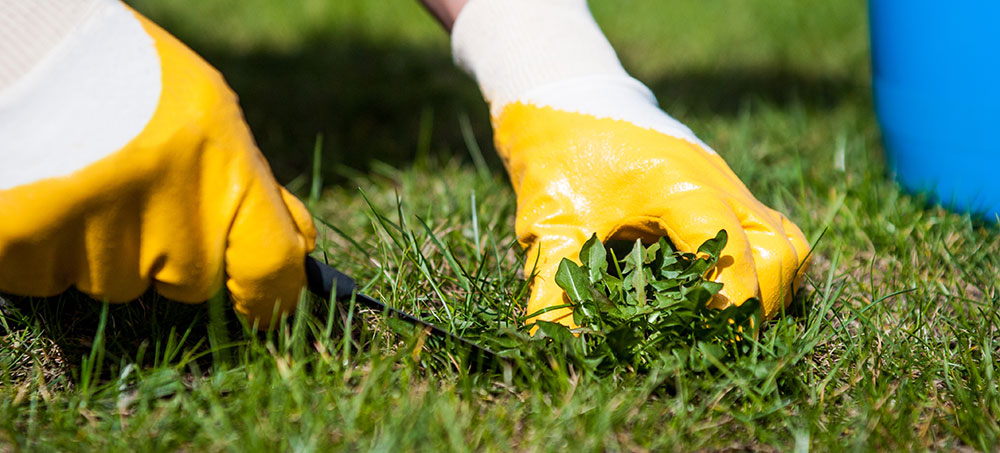
Eventually weeds will be a problem in every lawn. Keeping your lawn lush and healthy helps choke many weeds out. If you do get a weed infestation, take quick action. Once a weed population spreads, it is more visible in your yard and harder to eradicate.
Hiring a company to do a quarterly lawn weed and feed spray service is the easiest way to win the battle against weeds in your lawn. If you are a “do-it-yourselfer,” below are some tips to follow based on the type of weeds in your lawn.
Weed Identification
The first step in treating your particular weed problem is to first identify the type of weeds you need to treat. Most weeds in California fall into three main categories – broadleaf, grassy, or sedge. Some gardeners also classify clover invasions in lawns as a separate category because there are specific products designed to kill just clover. The University of California has a very comprehensive weed photo gallery that will help you identify the weeds in your lawn.
Broadleaf Weeds
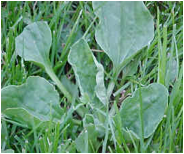 Broadleaf weeds are the easiest to identify in your lawn because they look the least like the rest of the grass. The most common types of these weeds include dandelion, chickweed, and many others. Broadleaf weeds have leaves that are larger in size and different in shape from a grass that has a long thin blade.
Broadleaf weeds are the easiest to identify in your lawn because they look the least like the rest of the grass. The most common types of these weeds include dandelion, chickweed, and many others. Broadleaf weeds have leaves that are larger in size and different in shape from a grass that has a long thin blade.
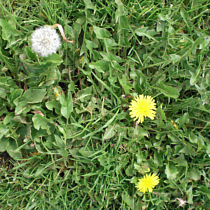 Killing broadleaf weeds is accomplished easily with any generic broadleaf weed killer. Many of these are pre-mixed so you just need to buy the bottle and spray. If your lawn has been infested with many weeds, consider using a granular “weed and feed” fertilizer that applies an herbicide along with fertilizer to help improve the thickness of your lawn. Remember to wait until the cooler weather of early fall before applying this type of product so the fertilizer won’t burn the turf.
Killing broadleaf weeds is accomplished easily with any generic broadleaf weed killer. Many of these are pre-mixed so you just need to buy the bottle and spray. If your lawn has been infested with many weeds, consider using a granular “weed and feed” fertilizer that applies an herbicide along with fertilizer to help improve the thickness of your lawn. Remember to wait until the cooler weather of early fall before applying this type of product so the fertilizer won’t burn the turf.
If there are only a few broadleaf weeds to deal with, you can either pull them up or apply a general broadleaf herbicide available at your local garden center. The disadvantage to pulling the weeds is that it’s very difficult to actually pull up the entire weed. Leaving some of the root behind will mean that the plant will return at some point. Check product labels or speak with your garden center experts to find an herbicide that will not damage the grass.
Clover
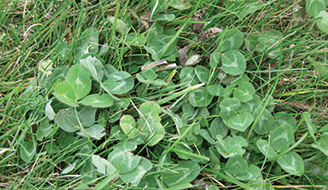 Though technically a broadleaf weed, clover can be especially invasive to a lawn and spread very quickly. There are herbicide products on the market that have been designed to specifically treat clover infestations. A quick internet search or conversation with your local garden center can help you find the benefits and drawbacks of using these types of herbicides. Multiple applications may be needed to control clover or chickweed effectively.
Though technically a broadleaf weed, clover can be especially invasive to a lawn and spread very quickly. There are herbicide products on the market that have been designed to specifically treat clover infestations. A quick internet search or conversation with your local garden center can help you find the benefits and drawbacks of using these types of herbicides. Multiple applications may be needed to control clover or chickweed effectively.
Grassy Weeds
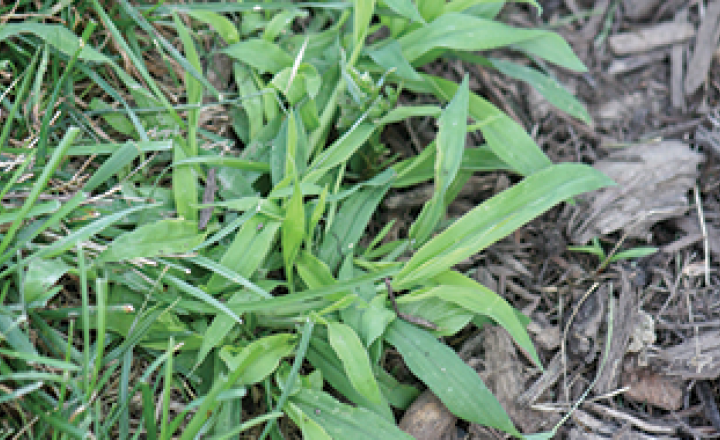 Getting rid of grassy weed invaders, like the crabgrass pictured above, can be tricky! But there is hope! Crabgrass can be controlled and even eliminated with careful maintenance, and a lot of patience. Most grassy weeds thrive in hot, dry conditions and produce a very large number of seeds that will germinate when the conditions are right during the following year. Eliminating grassy weeds can be done several ways:
Getting rid of grassy weed invaders, like the crabgrass pictured above, can be tricky! But there is hope! Crabgrass can be controlled and even eliminated with careful maintenance, and a lot of patience. Most grassy weeds thrive in hot, dry conditions and produce a very large number of seeds that will germinate when the conditions are right during the following year. Eliminating grassy weeds can be done several ways:
- If you have a small infestation, the easiest solution often is to manually pull grassy weeds. Crabgrass is relatively easy (and sometimes even fun!) to pull by hand.
- If you have a larger infestation, treat the condition with a preemergent herbicide for grassy weeds. Do this during the cooler months of the year when the individual plants have not yet begun to germinate. Some fertilizers also include a preemergent herbicide such as Scotts fertilizer plus Halts. The goal of applying any preemergent herbicide is to lay down a barrier which prevents the weeds from germinating in early spring.
 There are spray herbicides designed to kill grassy weeds on contact. Normally you need to shut off watering for 24 hours after application to avoid washing the herbicide off the leaves of the grassy weeds. Consult your local garden center for a recommended grassy weed herbicide and apply according to the label.
There are spray herbicides designed to kill grassy weeds on contact. Normally you need to shut off watering for 24 hours after application to avoid washing the herbicide off the leaves of the grassy weeds. Consult your local garden center for a recommended grassy weed herbicide and apply according to the label.
You may need to re-seed or sod bard spots of the lawn damaged in the weed control process. Also check that you’re watering and mowing your lawn properly to ensure the best growth and prevent the grassy weeds from returning.
Sedge Weeds
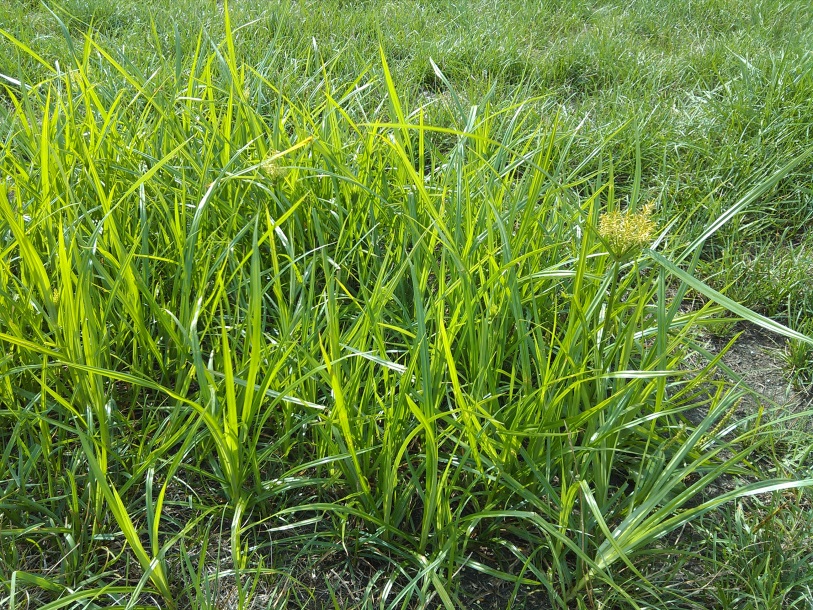 The most common type of sedge weed in California is called nutsedge or nutgrass. While this does resemble a grassy weed, the flowering and seeding process of these plants are quite different from many grassy weeds. As a result, the method of treating the lawn for these weeds uses a slightly different product.
The most common type of sedge weed in California is called nutsedge or nutgrass. While this does resemble a grassy weed, the flowering and seeding process of these plants are quite different from many grassy weeds. As a result, the method of treating the lawn for these weeds uses a slightly different product.
Sedge weeds like over-watered lawns or areas where water tends to pool after normal irrigation. The first step to long-term control of sedge weeds relies on first examining your lawn’s irrigation system. Adjust sprinkler heads in areas that seem to accumulate excess water – this will also help the lawn in those areas stay healthier.
Hand-pulling of nutsedge is difficult since there is a nut in the soil that must be removed. A non-selective herbicide such as Round-up will harm, but not kill the plant. Nutsedge is a tough customer!!
The best way to get rid of nutsedge is use an herbicide that is specifically designed to deal with sedge weeds. Ortho has a “ready to spray” bottle of nutsedge herbicide and Sedgehammer comes in packages you mix yourself.
Spray at least twice at a two to four week interval for effective control Take care to read product labels and do not irrigate for 24 hours after so the nutsedge herbicide is not washed off.
Here’s to a healthy, weed-free lawn!!

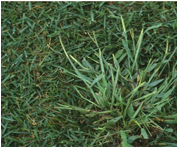 There are spray herbicides designed to kill grassy weeds on contact. Normally you need to shut off watering for 24 hours after application to avoid washing the herbicide off the leaves of the grassy weeds. Consult your local garden center for a recommended grassy weed herbicide and apply according to the label.
There are spray herbicides designed to kill grassy weeds on contact. Normally you need to shut off watering for 24 hours after application to avoid washing the herbicide off the leaves of the grassy weeds. Consult your local garden center for a recommended grassy weed herbicide and apply according to the label.
